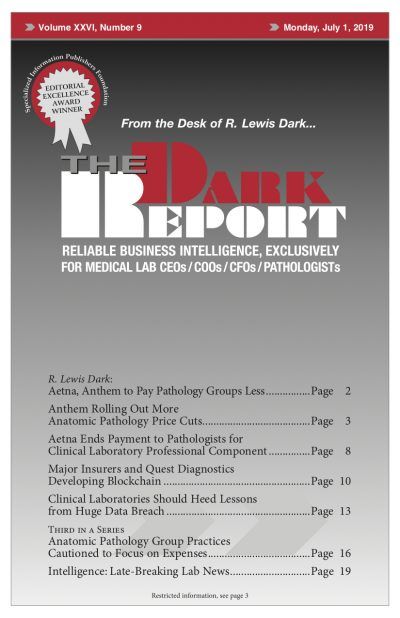CEO SUMMARY: Organizations developing blockchain technology say it is a tamper-proof method of sharing data across networks and among providers, health insurers, and health systems. The Synaptic Health Alliance includes four of the largest health insurers, a health network, and Quest Diagnostics. Its first project, now in its second year, will use blockchain to create …
Four Insurers, Quest Developing Blockchain Read More »
To access this post, you must purchase The Dark Report.


